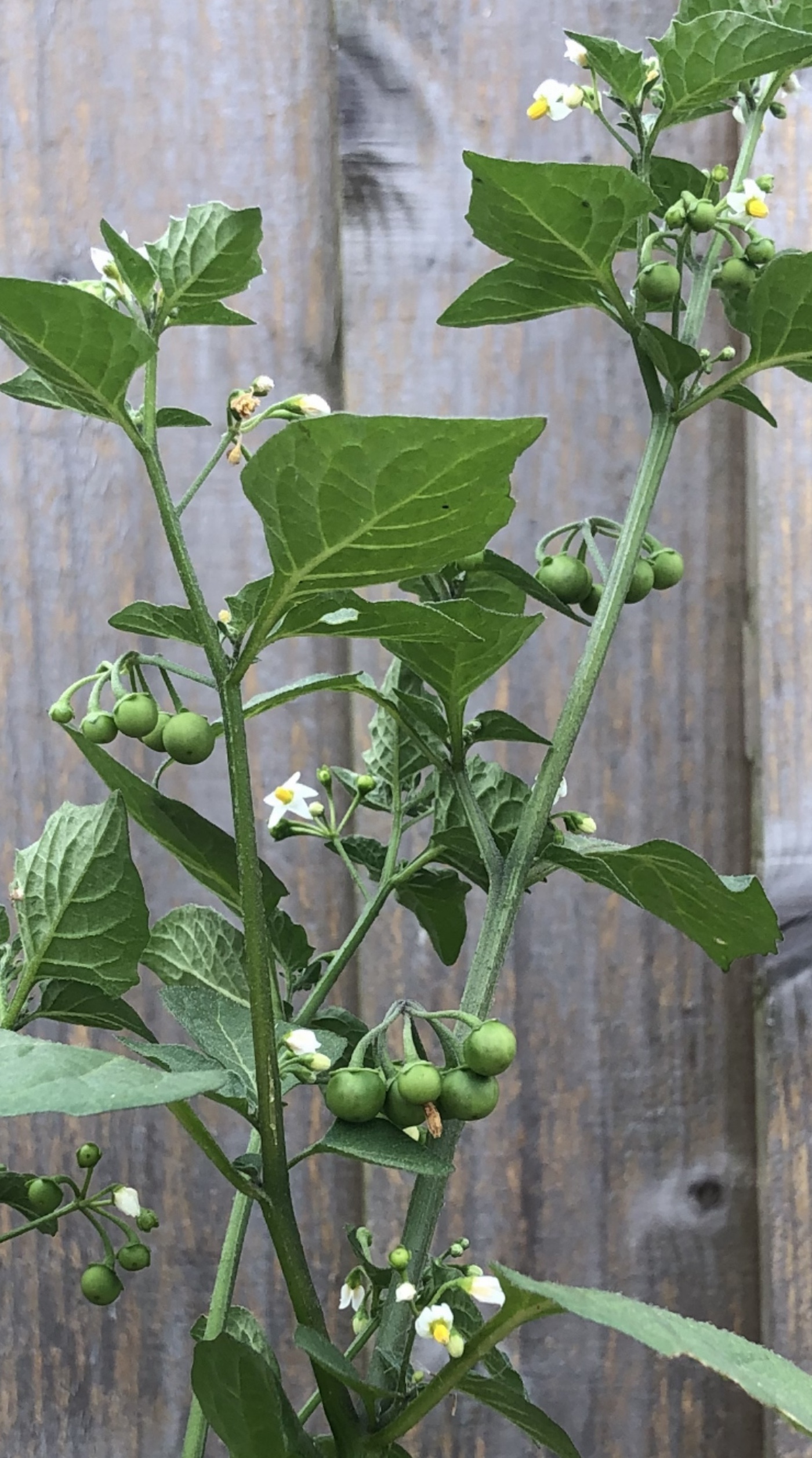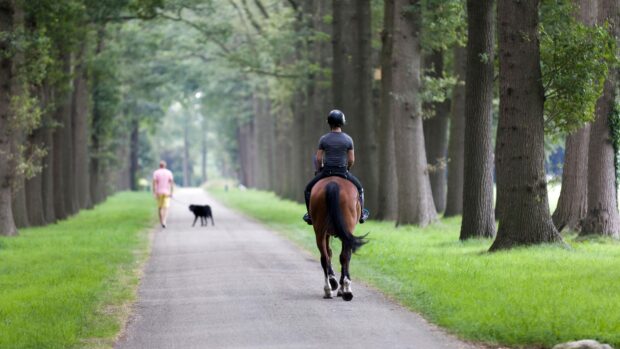The owner of a “horse of a lifetime” who was moments from being put down owing to an illness likely caused by a toxic plant is sharing her story in hopes of raising awareness and saving other horses.
Lisa Lane’s Irish Draught mare Hazel was first thought to be suffering from grass sickness or colic when she became very ill weeks after her first foal was born in autumn 2023. She underwent gastric surgery, during which failure of normal motility was diagnosed.
Then Lisa found out about eastern black nightshade, a plant that is poisonous to humans and animals – and found it growing in Hazel’s field.
“I’d had a call saying I needed to go and say goodbye to her,” Lisa told H&H. She had the surgery on Monday, then by Tuesday lunchtime, I’d found the plants. I said to the vets, ‘I think it might be this.’” Within hours, she was looking better – and she lived.”
Hazel’s foal had to be taken away and put with a foster mare, but he is now weaned and living with his mother, who is as good as new.
“The poison paralyses the digestive system, hence it looks like colic or grass sickness,” Lisa said. “My vets were brilliant, but none of them had heard of this plant.
“When Hazel was in hospital, they were taking huge amounts of liquid out of her stomach every hour, as her stomach would have burst otherwise. The vets said if it was that plant, there were drugs they could try – and by the next morning, the scans showed there was no liquid to take out. I was sobbing my heart out, saying, ‘It’s worked, it’s worked.’”

Lisa added that she has been scouring her fields for eastern black nightshade ever since. It grows between May and October, and last summer she started experiencing numbness in her right hand and heart palpitations. A scan showed her heart was normal.
“A week later, I realised it must be from the plant,” she said. “I stopped picking it with my bare hands and I was fine.
“I need to get the word out. I adore that mare, she’s one of the family and would have died if we hadn’t found out about this plant, but no one knows about it. I dread to think how many horses get put to sleep because people don’t know about this plant, its effects and that neostigmine treatment can reverse the poison. If sharing what happens saves one other horse, it’s all worth it.”
Lisa’s vet Sam Cutts told H&H she had been unaware of eastern black nightshade before Hazel’s case.
“It appears to be more palatable than you would hope; if your horse starts showing this type of symptoms, look in your field,” she said. “With deadly nightshade, you get the typical very dilated pupils, which would make you suspect poisoning, but Hazel didn’t have that – she presented with what looked like colic, but in surgery they found no torsion or anything.
“For the gut to stop moving, grass sickness is high on the list of possibles, but those tests were negative and at that point, you’re prepared to consider the unlikely, as there’s nothing very likely left – so let’s try the antidote and see what happens.
“I was delighted by the outcome. Everyone worked together to have the best outcome for the mare.”
- To stay up to date with all the breaking news from major shows throughout 2025, subscribe to the Horse & Hound website
You may also be interested in:

Heartbroken owner’s awareness call as horses who spent their lives together die within 10 minutes

5 common plants that could kill your horse
While many plants can be poisonous if eaten to excess, there are some poisonous plants that horses should avoid at

Going green – the steps you can take to manage your grazing land more sustainably

Subscribe to Horse & Hound magazine today – and enjoy unlimited website access all year round




